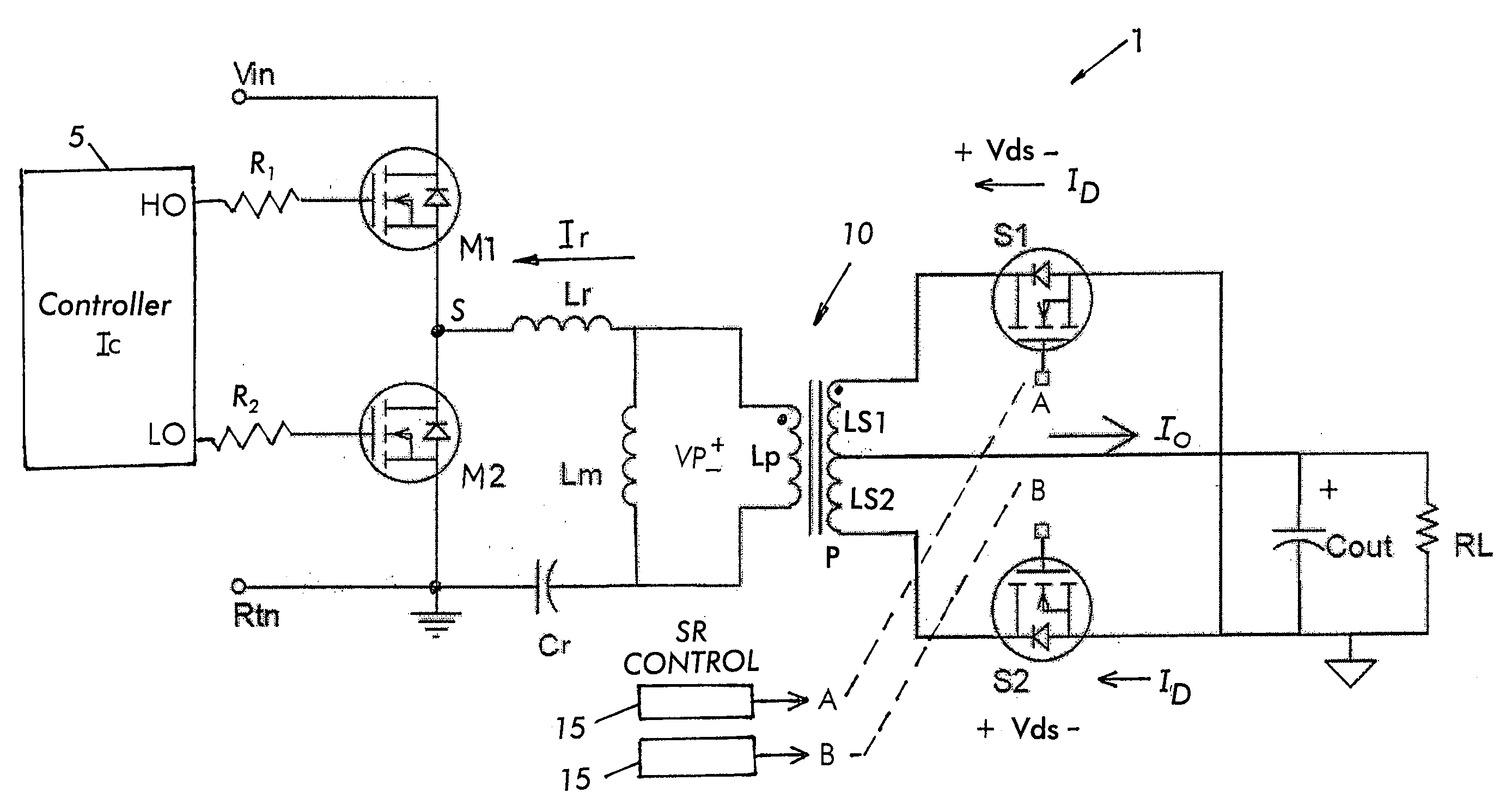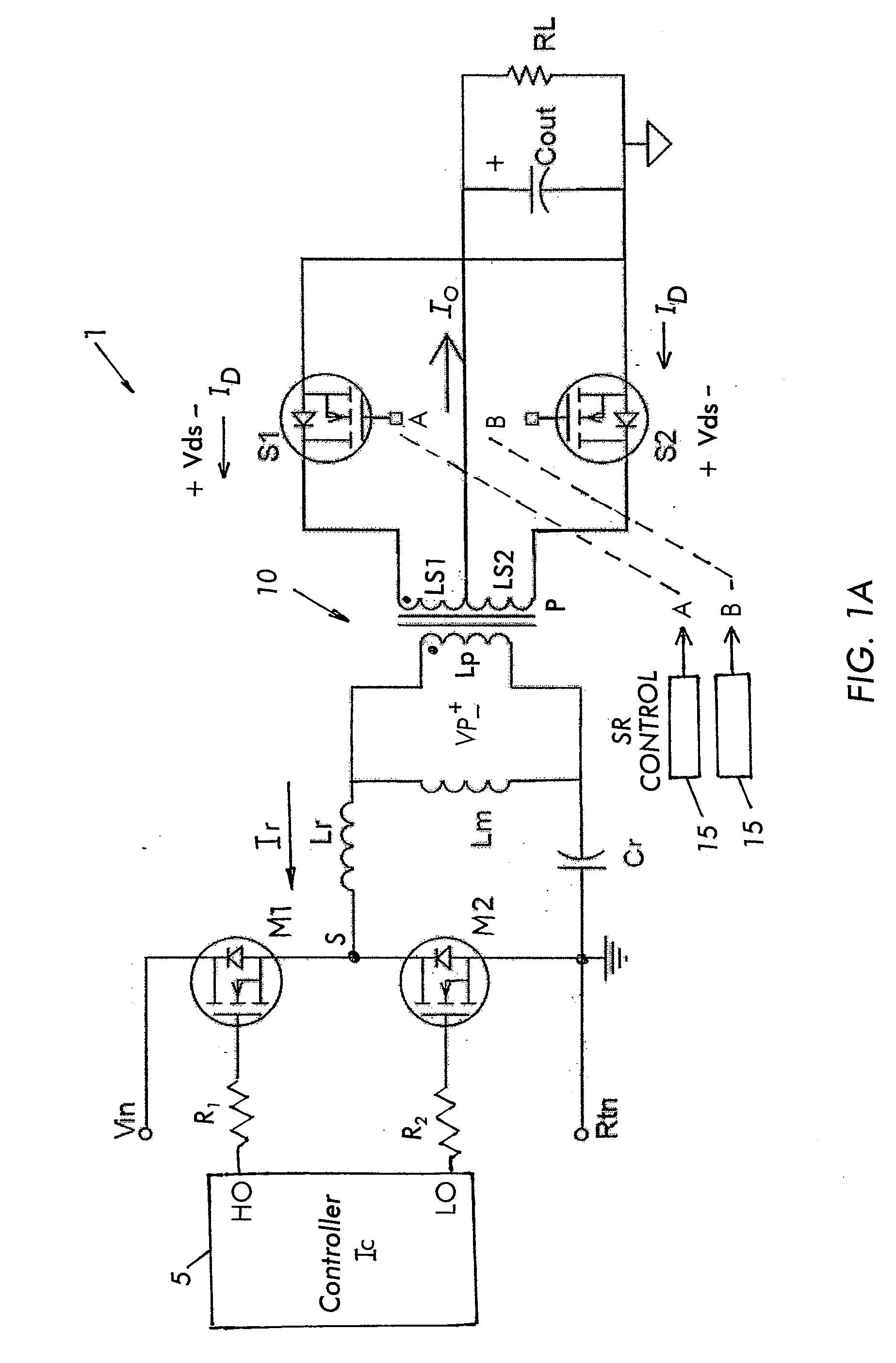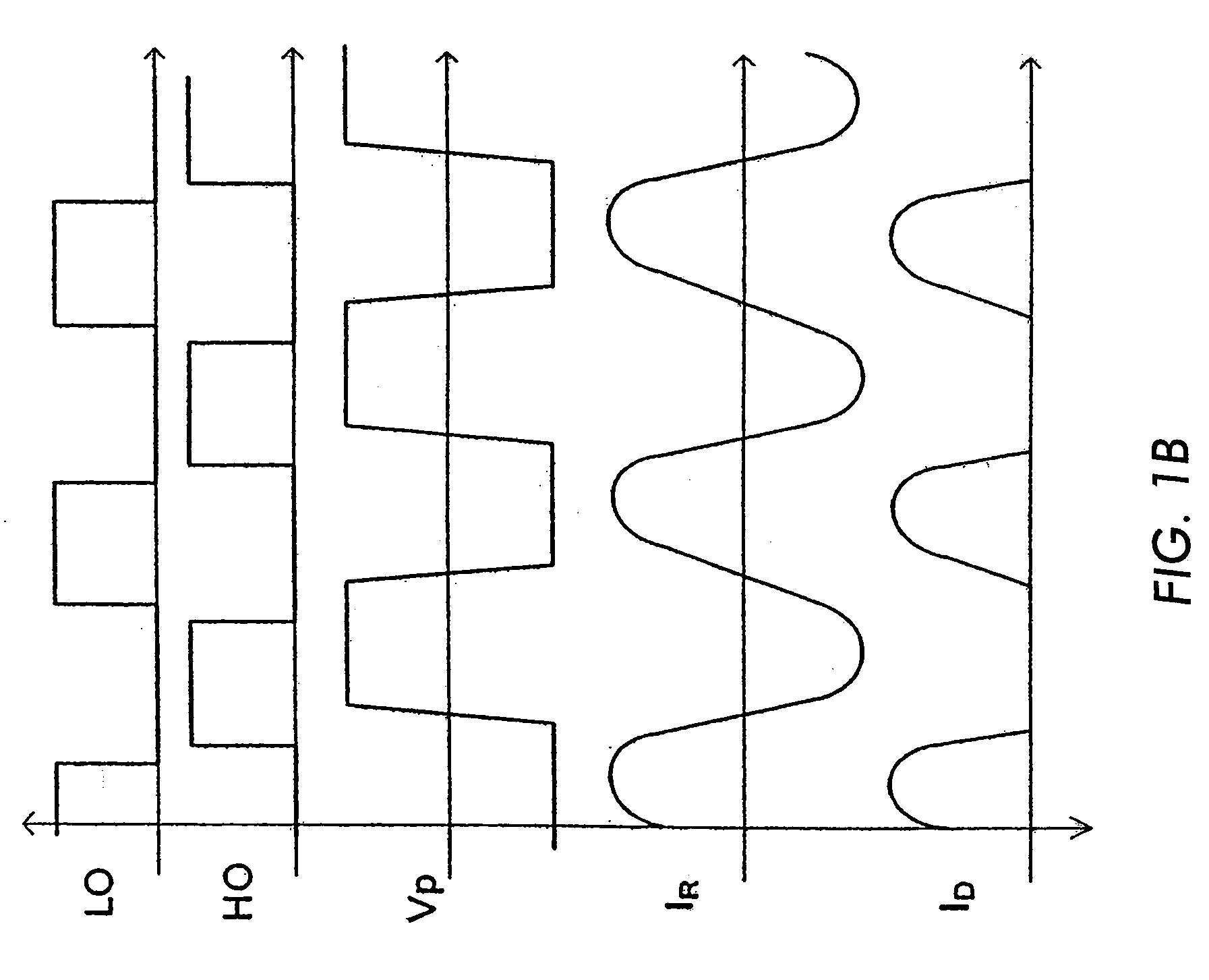Secondary side synchronous rectifier for resonant converter
a synchronous rectifier and converter technology, applied in the direction of dc-dc conversion, climate sustainability, power conversion systems, etc., can solve the problems of controller ics not being able to operate during burst mode conditions, unsatisfactory performance, and effective heat removal from sealed boxes, so as to reduce conduction and leakage losses
- Summary
- Abstract
- Description
- Claims
- Application Information
AI Technical Summary
Benefits of technology
Problems solved by technology
Method used
Image
Examples
Embodiment Construction
[0051]The present invention provides a solution for replacing diode rectifiers with synchronous rectification in resonant DC-DC converters independent of the topology and operating modes of the converter. This in turn dramatically reduces conduction and leakage losses.
[0052]To emulate the diode rectification function it is necessary to determine the direction of flow of current in the switch and turn off the switch promptly when the current direction reverses. To perform these functions, the current in the switch is sensed using the switch's on-state resistance. The invention switches the two synchronous MOSFETs S1 and S2 (FIG. 1a) ON and OFF depending on their sensed drain to source voltages (i.e., VDS1 and VDS2). This basic design is described in U.S. patent application Ser. No. 10 / 978,719 entitled “Integrated Synchronous Rectifier Package,” for a half-wave synchronous rectifier (IR-2636).
[0053]FIG. 5 illustrates an internal block diagram of an eight pin IC 15 designed to control ...
PUM
 Login to View More
Login to View More Abstract
Description
Claims
Application Information
 Login to View More
Login to View More - R&D
- Intellectual Property
- Life Sciences
- Materials
- Tech Scout
- Unparalleled Data Quality
- Higher Quality Content
- 60% Fewer Hallucinations
Browse by: Latest US Patents, China's latest patents, Technical Efficacy Thesaurus, Application Domain, Technology Topic, Popular Technical Reports.
© 2025 PatSnap. All rights reserved.Legal|Privacy policy|Modern Slavery Act Transparency Statement|Sitemap|About US| Contact US: help@patsnap.com



